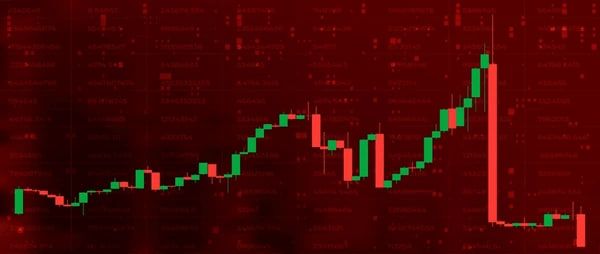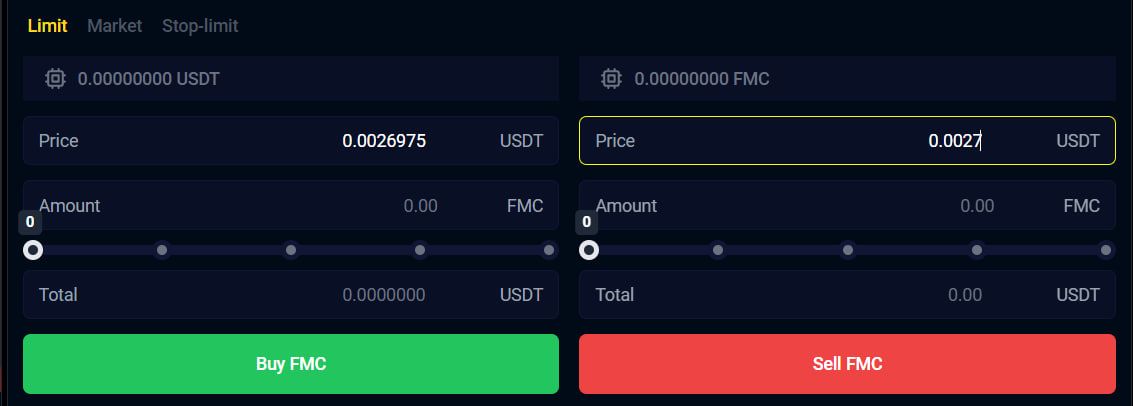Illiquidity in crypto is a silent risk that can dramatically impact your trading, investment returns, and even your ability to exit positions. As the crypto market matures in 2025, understanding illiquidity in crypto is more crucial than ever for both new and seasoned investors. This article explores what illiquidity in crypto means, its root causes, how to identify it, and how to protect yourself from its costly consequences.
Takeaways
- What does illiquidity in crypto mean? It means a crypto asset cannot be bought or sold easily without impacting its price due to lack of market activity.
- How can I avoid illiquid tokens? Check trading volume, bid-ask spread, and exchange listings. Stick to high-volume assets and reputable exchanges.
- Is low liquidity always a bad thing in crypto? Not always. Early-stage investors may tolerate it for long-term gains, but it poses significant short-term risks.
- Can large-cap coins also be illiquid? Rarely, but yes. Even large tokens can suffer from illiquidity in crypto during market crashes or delistings.
1. What Is Illiquidity in Crypto?
Illiquidity in crypto refers to the difficulty or inability to buy or sell a cryptocurrency quickly at a price close to its market value. In other words, there aren’t enough buyers or sellers available at the moment you want to execute a trade. This often happens when there’s low market interest or trading activity in the cryptocurrency.
Due to insufficient buy/sell orders in the orderbook, an illiquid crypto asset cannot be easily exchanged for cash or other tokens without causing a significant price change. This contrasts with liquid assets, like Bitcoin or Fimarkcoin, which can be traded in large volumes with minimal price impact.
In traditional finance, illiquid assets include hard-to-sell things like real estate or rare art. However, lliquidity in crypto world often affects small-cap tokens, new projects, or coins with limited exchange listings. The lack of buyers and sellers means that even small trades can move prices sharply, increasing risk for investors and traders.

Why does illiquidity in crypto matter?
- It increases transaction costs and slippage.
- It makes it harder to exit positions during market stress.
- It can lead to price manipulation and volatility spikes.
In some cases, illiquid assets may trade at a discount, or require an “illiquidity premium” to compensate investors for the added risk.
2. Causes of Illiquidity in Crypto Markets
Illiquidity in crypto market doesn’t occur by accident, it results from project fundamentals, market dynamics, or external factors. While large-cap tokens tend to enjoy consistent liquidity, smaller or less-known assets can suffer from extreme price slippage and slow execution due to the reasons outlined below:
2.1 Low Trading Volume
One of the most common causes of illiquidity in crypto is low trading volume. Coins with limited daily activity simply don’t have enough buyers and sellers at any given time. For instance, tokens outside the top 500 by market cap often have less than $500,000 in daily volume, making them particularly risky. Traders looking to enter or exit positions in such assets often face wide bid-ask spreads and delays in order execution.
2.2 Niche or Low-Cap Projects
Many illiquid crypto tokens belong to niche ecosystems or experimental projects. These may offer innovative technology but lack a broad user base or investor interest. As a result, they often have lower market caps, making them more susceptible to illiquidity in crypto exchanges.
2.3 Technological Barriers
Even when there’s interest in a token, technological challenges can create friction in trading. Poor wallet support, incompatibility with major protocols, inefficient smart contract design, or bugs in the token’s code can all act as barriers. These issues discourage traders, leading to reduced participation and increased illiquidity in crypto assets, especially those in early development stages.
2.4 Limited Exchange Listings
If a token is listed on just one or two exchanges (especially those with lower credibility), its availability and visibility are restricted, so fewer traders are exposed to the asset.
This leads to fewer participants, lower trading activity, and ultimately greater illiquidity in crypto markets. Even promising projects can suffer if they fail to secure listings on major centralized or decentralized exchanges with high liquidity pools.
2.5 Market Sentiment and Panic
Sentiment plays a powerful role in crypto markets. A sudden wave of negative news, hacks, or social media-driven fear can trigger panic selling. When this happens in an already thin market, buy orders disappear quickly, leaving sell orders unfilled. The result is a liquidity crunch, a defining symptom of illiquidity in crypto environments. This may even lead to flash crashes of the token.

2.6 Regulatory Uncertainty
Legal and regulatory risks also contribute to illiquidity in crypto markets. When a token is under investigation by regulators, or if there’s fear of impending sanctions, exchanges may choose to delist the asset to avoid compliance risks. Such actions create abrupt illiquidity in crypto markets, leaving holders unable to sell their assets quickly or at fair prices.
2.7 Market Manipulation
Low-liquidity assets are prime targets for pump-and-dump schemes. Manipulators can exploit the lack of resistance in the order book to inflate or depress prices temporarily. This artificial movement contributes further to illiquidity in crypto by deterring genuine traders. Once manipulated, the trust in a token’s price stability diminishes, drying up organic market participation.
Nowadays, institutional participation and improved infrastructure have increased liquidity for top coins. However, illiquidity in crypto remains a persistent risk for smaller and newer tokens, especially as DeFi and new blockchain ecosystems proliferate.
3. How to Identify Illiquidity in a Crypto Asset
Spotting illiquidity before investing or trading can save you from costly mistakes. The following are practical steps to identify illiquidity in crypto market:
Criteria 1: Daily Trading Volume
Check if the asset maintains a consistent daily trading volume above $1 million. Lower figures often point to illiquidity.
Criteria 2: Bid-Ask Spread
A wide gap between the buy and sell prices is a red flag. In highly liquid markets, this spread is narrow. But in cases of illiquidity in crypto, the spread can reach 10% or more.
Criteria 3: Order Book Depth
Examine how deep the order book is. If only a few buy or sell orders are visible, it indicates illiquidity, which can affect your ability to trade larger amounts.
Criteria 4: Exchange Reputation and Pair Availability
Tokens available only on obscure or decentralized exchanges often face illiquidity in crypto. Also, if a token is only paired with one major coin, it limits your trading flexibility.
Criteria 5: Volatility Without Volume
If a token’s price moves erratically but lacks corresponding trading activity, it’s often a sign of manipulation or illiquidity in crypto.
Criteria 6: Volatility Without Volume
Verify if liquidity is locked in smart contracts, and for how long. Unlocked or easily withdrawn liquidity is a risk
|
Indicator |
What to Look For |
Why It Matters |
|
24h Trading Volume |
Low compared to market cap |
Harder to trade |
|
Bid-Ask Spread |
Wide difference between buy/sell prices |
Costly to enter/exit |
|
Order Book Depth |
Few orders at each price level |
High price impact |
|
Exchange Listings |
Listed on few exchanges |
Limited access |
|
Volatility Without Volume |
Price moves without corresponding trading volume |
Prone to manipulation |
| Liquidity Lock Status | Unlocked or short-term locks |
Risk of rug pulls |
4. How to Protect Yourself from Illiquid Crypto Assets
Illiquidity in crypto can trap investors in untradeable positions, expose them to manipulation, and cause significant losses. Protecting yourself from illiquid assets requires proactive research, disciplined strategies, and an understanding of market mechanics. Here are strategies you can apply to reduce your exposure to illiquidity in crypto markets:
4.1 Stick to Reputable Projects
One of the simplest ways to avoid illiquidity in crypto is by focusing your investments on well-established tokens. Coins within the top 500 by market capitalization typically benefit from consistent trading volume, robust community engagement, and active development teams.
These tokens are more likely to be listed on multiple exchanges and integrated into various wallets and DeFi platforms, making them easier to trade. Look for projects with transparent roadmaps, real-world use cases, and sustained user activity, all indicators of long-term liquidity health.
4.2 Diversify Across Assets
Never put all your capital into one or two low-cap coins. Diversification remains one of the most effective strategies for mitigating risk. By spreading your investments across a mix of high-, mid-, and low-liquidity assets, you reduce the chances that a single illiquid token will significantly impact your overall portfolio.
If illiquidity affects one of your holdings, the financial damage is minimized when balanced against more liquid assets.
4.3 Use Limit Orders
Trading illiquid assets with market orders can result in significant price slippage, meaning you’ll pay more or receive less than expected. To minimize this risk, always use limit orders.
A limit order lets you define the maximum price you’re willing to pay (or minimum price you’re willing to accept), offering better control in low-liquidity environments. This approach helps manage the direct costs of illiquidity in crypto and ensures more predictable execution.

4.4 Verify Exchange Volume
Before executing any trade, check the trading volume and liquidity on the exchange where the asset is listed. Use tools like CoinMarketCap, CoinGecko, and TradingView to analyze 24-hour volume, bid-ask spreads, and the depth of the order book.
A token might appear liquid overall but have poor volume on specific trading pairs or platforms. Ignoring this step can lead to unexpected slippage, delayed execution, or the inability to exit positions — all classic symptoms of illiquidity in crypto markets.
4.5 Verify Locks and Tokenomics
For newer tokens or DeFi projects, it’s crucial to investigate whether the project’s liquidity is locked. A liquidity lock ensures that the token’s liquidity pool cannot be pulled by developers or malicious actors shortly after launch, a common tactic in rug pulls.
Use platforms like Team Finance or DEXTools to confirm the status and duration of liquidity locks. Projects with unlocked or short-duration liquidity pose higher risks of sudden illiquidity in crypto, especially in volatile market conditions.
4.6 Set Risk Management Rules
Define clear rules around how much you’re willing to invest in low-liquidity assets. A common guideline is to limit such tokens to no more than 5% of your overall portfolio. Additionally, use stop-loss orders and take-profit strategies when possible, especially if trading on centralized platforms that support them.
Staying disciplined with your allocations and exits can shield you from the harsher effects of illiquidity in crypto, particularly during unexpected market downturns or panic-driven sell-offs.
5. When Is It Okay to Invest in Illiquid Crypto?
While illiquidity in crypto is often a warning sign, there are scenarios where it can be part of a calculated investment strategy.
The Illiquidity Premium
Illiquid crypto assets sometimes offer higher potential returns to compensate for the added risk (this is known as the Illiquidity Premium). Studies show that the most illiquid cryptocurrencies can deliver significantly higher returns than their liquid counterparts, though with increased volatility and risk.
When is Illiquidity in Crypto Might Be Acceptable?
- Long-Term Holding: If you plan to hold for years and believe in the project’s fundamentals, illiquidity in crypto may be less of a concern.
- Early-Stage Investments: Investing early in a promising project often means accepting some illiquidity in crypto in exchange for higher upside potential.
- Diversified Portfolio: Allocating a small portion of your portfolio to illiquid assets can boost returns if balanced with more liquid holdings.
- Staking or Lock-Up Rewards: Some protocols offer rewards for locking up tokens, compensating for illiquidity in crypto.
Risks to Consider
- Exit Difficulty: You may be unable to sell when you want, especially during market downturns.
- Price Manipulation: Illiquid markets are more susceptible to manipulation by large holders or “whales.”
- Regulatory and Technical Risks: Sudden changes can freeze trading or drain liquidity pools.
Conclusion
While it’s easy to be dazzled by potential returns, ignoring illiquidity in crypto can be a costly mistake. Whether you’re day trading, investing long-term, or exploring new tokens, understanding liquidity is critical.
By recognizing the warning signs and adjusting your strategy, you can protect your assets and make smarter, safer moves in the crypto space. Never overlook the importance of liquidity in the trading realm, because being unable to sell can be more dangerous than a price dip.
Check out FMCPAY News for more helpful crypto insights, trading tips, and the latest updates around the financial world.

